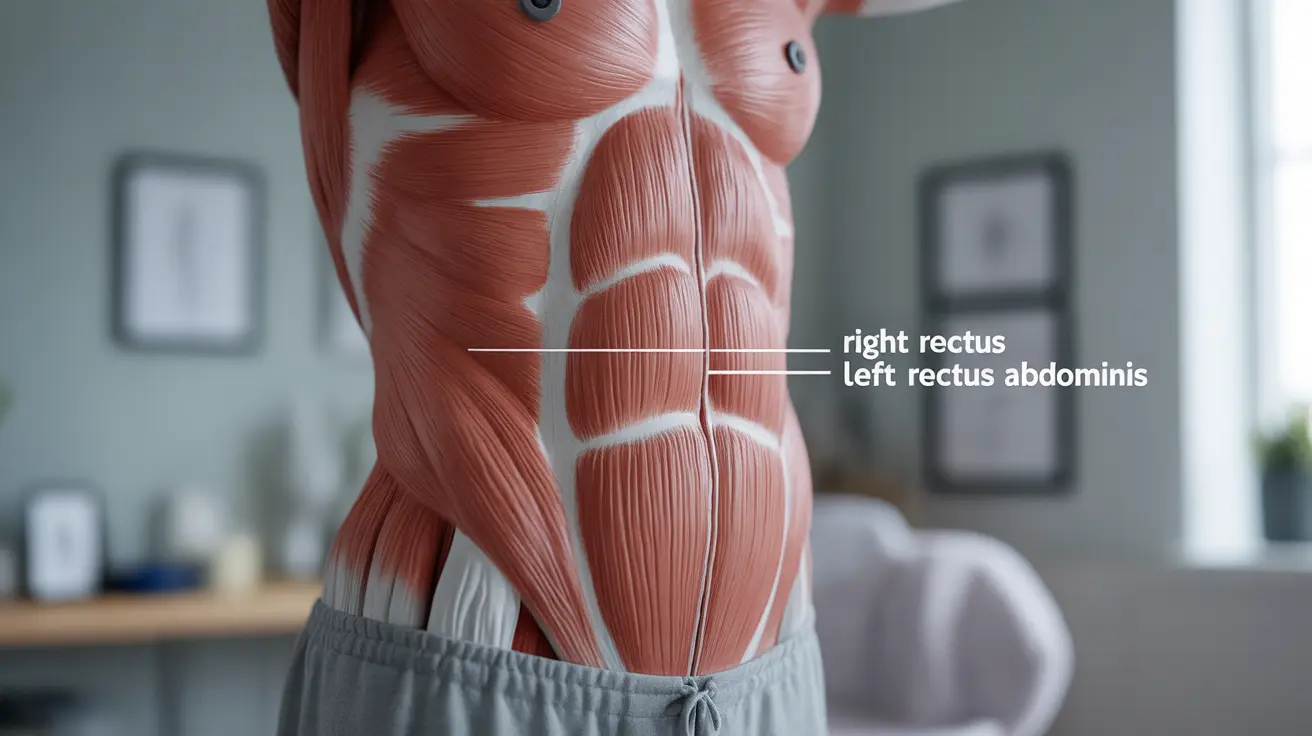Diastasis recti is a common condition that occurs when the abdominal muscles separate along the midline of the stomach, creating a gap between the right and left sides of the rectus abdominis muscles. This separation most frequently affects pregnant women and new mothers, though it can also occur in newborns and men. Understanding this condition is crucial for proper diagnosis and treatment.
While diastasis recti isn't dangerous, it can cause physical discomfort, affect core strength, and impact daily activities. This comprehensive guide will explore the causes, symptoms, diagnosis, and treatment options available for those experiencing this condition.
Understanding the Causes and Risk Factors
Several factors can contribute to the development of diastasis recti, with pregnancy being the most common cause. During pregnancy, the growing uterus puts pressure on the abdominal wall, causing the muscles to stretch and separate. Other risk factors include:
- Multiple pregnancies
- Being over 35 during pregnancy
- Having a heavy birth weight baby
- Genetics and tissue quality
- Incorrect exercise technique
- Obesity
Signs and Symptoms
Recognizing the signs of diastasis recti is crucial for early intervention. Common symptoms include:
- A visible bulge or dome in the middle of the abdomen
- Lower back pain
- Poor posture
- Weak core muscles
- Difficulty with certain movements
- Pelvic floor dysfunction
- Constipation
Diagnostic Process
Healthcare providers typically diagnose diastasis recti through physical examination. The process involves:
Physical Assessment
The provider will have you lie on your back with knees bent and feet flat on the floor. They'll check for separation while you perform a small curl-up or head lift.
Measurement Techniques
The gap is measured in finger-widths or centimeters, both at rest and during muscle contraction. A separation of more than 2.7 centimeters is typically considered diastasis recti.
Treatment Approaches
Conservative Management
Most cases of diastasis recti can be treated with appropriate exercise and physical therapy. Key components include:
- Proper breathing techniques
- Core strengthening exercises
- Posture correction
- Modified daily activities
Safe Exercise Programs
Effective exercises for diastasis recti recovery include:
- Diaphragmatic breathing
- Gentle core compressions
- Modified planks
- Pelvic tilts
- Wall sits
Surgical Options
In severe cases where conservative treatment doesn't provide sufficient improvement, surgical repair might be recommended. This is typically considered when:
- The separation is severe
- Conservative treatments have failed
- Quality of life is significantly impacted
- Core weakness persists despite therapy
Prevention and Long-term Management
Preventing diastasis recti or preventing it from worsening involves:
- Maintaining good posture
- Using proper body mechanics
- Avoiding exercises that strain the abdominal wall
- Managing weight gain during pregnancy
- Working with qualified healthcare professionals
Frequently Asked Questions
What causes diastasis recti and who is most at risk for developing it? Diastasis recti is primarily caused by internal abdominal pressure that stretches and separates the abdominal muscles. Pregnant women, especially those over 35 or carrying multiple babies, are at highest risk. Other risk factors include obesity and improper exercise technique.
What are the common signs and symptoms of diastasis recti after pregnancy? Common symptoms include a visible bulge or pooch in the midsection, lower back pain, poor posture, weakened core strength, and difficulty with certain movements or exercises.
How can diastasis recti be diagnosed and measured by healthcare providers? Healthcare providers diagnose diastasis recti through physical examination, typically having patients perform specific movements while lying down. The separation is measured in finger-widths or centimeters both at rest and during muscle contraction.
What are the safest and most effective exercises to help treat diastasis recti postpartum? Safe and effective exercises include diaphragmatic breathing, gentle core compressions, modified planks, pelvic tilts, and wall sits. It's important to avoid exercises that create bulging or doming of the abdomen.
When is surgery recommended for diastasis recti, and what other treatment options are available? Surgery is typically recommended when conservative treatments fail to provide improvement, the separation is severe, or quality of life is significantly impacted. Other treatment options include physical therapy, proper exercise programs, and postural correction techniques.




